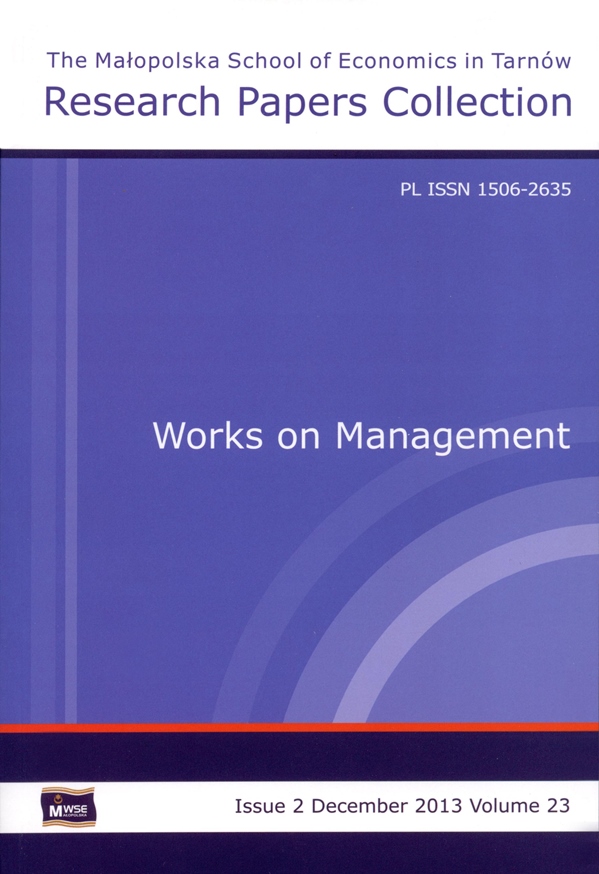Abstract
Development potential understood in a general sense is a criterion for assessing a given system (companies, institutions or the national economy), measuring the possible achievement of projects at a high level of effectiveness and the ability to increase wealth and stimulate growth in various areas of activity (reflecting the value of strategic potential). The paper presents the characteristics of a company’s development potential and its measurement at the level of a multi-criteria analysis. This formula is presented in the context of qualitative research which is referred to different assessment criteria. Because of the diversity of primary criteria and sub-criteria, development potential estimations are based on aggregate qualification. It results from the fact that development potential can be considered from the perspective of partial components or as an aggregate. The author proposes IPXi as a measure for estimating development potential. It refers to a company’s production capacity which can be estimated at different qualitative levels: considerable potential, satisfactory potential and the lack of potential.
References
Annex to the Resolution of Minister of Science and Higher Education of 4 January 2011, item 91 (Levels of technology readiness).
View in Google Scholar
Ching A.T., Ishihara M. “Measuring the informative and persuasive roles of detailing on prescribing decisions”. Management Science, 2012, vol. 58, no. 7.
View in Google Scholar
Demerijan P., Lev B., McVay S. “Quantifying managerial ability: A new measure and validity tests”. Management Science, 2012, vol. 58, no. 7.
View in Google Scholar
Pawełek B. Metody normalizacji zmiennych w badaniach porównawczych złożonych zjawisk ekonomicznych, Kraków: Wydawnictwo Uniwersytetu Ekonomicznego w Krakowie, 2008. ISBN 978-83-7252-398-3.
View in Google Scholar
Stabryła A. “Categorization as an instrument in managing company development capacity”. Argumenta Oeconomica Cracoviensia, 2005, no. 3.
View in Google Scholar
Stabryła A. “Metodyka oceny osiągnięć przedsiębiorstwa”. Zarządzanie i Finanse, 2013, no. 4, part 1.
View in Google Scholar
Strahl D. (ed.). Metody oceny rozwoju regionalnego. Wrocław: Wydawnictwo Akademii Ekonomicznej im. Oskara Langego we Wrocławiu, 2006. ISBN 83-7011-723-6.
View in Google Scholar
Sysko-Romańczuk S. Rozwój przedsiębiorstwa jako rezultat jego wzrostu i sprawności procesów zarządzania. Szczecin: Wydawnictwo Uniwersytetu Szczecińskiego, 2005. ISBN 83-7241-458-0.
View in Google Scholar
Wang C.L., Ahmed P.K. “Dynamic capabilities: A review and research agenda”. International Journal of Management Reviews, 2007, vol. 1, no. 9.
View in Google Scholar
© Copyright by Małopolska School of Economics in Tarnów. The articles are available under the Creative Commons Attribution NonCommercial-NoDerivatives 4.0 International License


